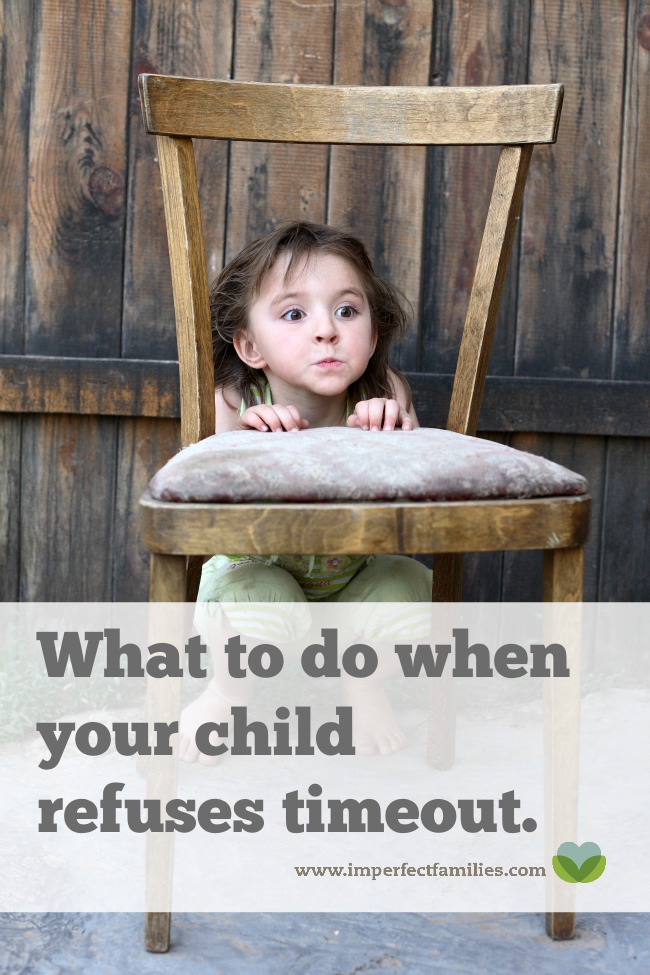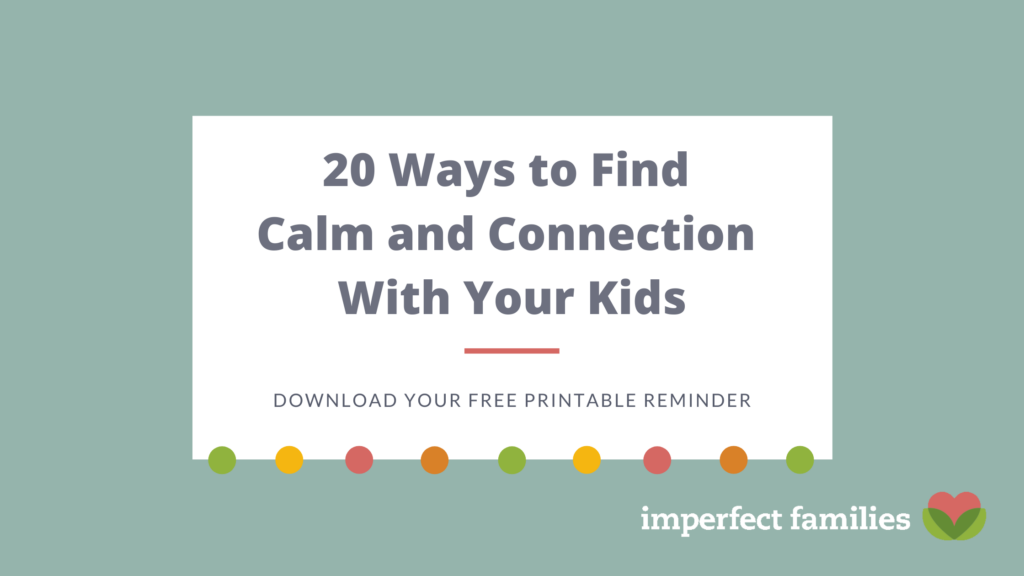You gave him a warning. If he threw the crayons on the floor again, he would be in timeout.
And…he did it anyway.
So, into timeout he goes.
Or, at least that’s what should happen.
Instead, you find yourself in a wrestling match. Grabbing him out of the chair, trying to drag him to the timeout area.
He’s not going without a fight. He’s screaming. Attempting to escape your grasp.
Forcing him to stay in the timeout is another challenge. It quickly becomes a game of chase. Around the room you go, trying to wrangle him back into timeout.
You’re exhausted.
As you stop to catch your breath, you wonder why you’re even bothering with timeouts in the first place. They don’t seem to make a difference in your child’s behavior, and it’s a whole lot of work for you.
But, if you’re not going to use timeouts, what do you do instead?
What do I do if my child refuses timeout?
Here’s the thing. Some of us grew up learning that timeout was the “best” and “most effective” method of discipline. Or, it was suggested by our pediatrician or our best friend. It is such a popular idea that when we became parents, we naturally turned to timeouts to keep our kids on track.
Unfortunately, we weren’t given a lot of other options for discipline. So, when timeouts don’t work, we panic. We fear that our children will grow up with horrible habits – and there is nothing we can do to stop it.
Thankfully, there is another another solution.
A timeout alternative.
- Stay Calm: Your first, and most important job, is to calm your own emotions. This may be the most difficult part for you. When your child misbehaves, your body responds. You’re flooded with emotion and ready for a fight. Unfortunately, this also means that you cannot think clearly and rationally (which usually means you’ll end up saying or doing something you regret). Do not move on to step #2 until you are calm. Really, it’s that important.
Related: Beyond “Take a Deep Breath”: Help for Angry Parents
- Connect with Your Child: When your child is misbehaving, it means that they are feeling big emotions. They do not know what to do with all of these feelings, and cannot think of a better way to handle the situation in this moment. When we see the situation from our child’s perspective, we can see the fear, stress, frustration, overwhelm, or sadness that they are experiencing. Connecting with empathy will allow your child to feel supported and loved.
“You were really hoping for 3 cookies instead of one.” Or, “You were having so much fun, you aren’t ready to leave yet.” Or, “You didn’t want your sister to use your scooter without asking.”
- Fill the Gap: Kids misbehave for a number of reasons: they feel disconnected from you, they are lacking the skill to do things differently, or they are unable to express what they are thinking or feeling. Sometimes, misbehavior is fueled by hunger, thirst, or exhaustion. Your job now is to find a way to solve this problem with your child. Do they need to learn how to express frustration appropriately? Do they need to learn how to ask politely for a toy? Do they need a hug from you, or an opportunity to talk about something that’s bothering them? Once you know, you can focus on teaching them new skills and strategies.
Yeah, but where’s the discipline?
I think you mean, where’s the punishment. When does the child experience some pain…so they know not to do that behavior again?
Discipline implies teaching, which is exactly what you’re doing here. You’re guiding your child to a better place. Helping them learn to identify their emotions so they can make a better decision next time. Introducing them to a new skill that will help them handle the situation differently in the future.
When your child is acting out, their emotions are too big. They need your help, they need you to walk with them through this process.
Which means, no more timeouts.
Let’s see how it works.
It’s time to head to the bathtub, but your son is still coloring at the table.
You give him a warning, “Bath time in 5 minutes, buddy!” But when the time comes, he begins throwing crayons and refusing to head to the bathroom.
Checking in with yourself, you realize that you’re already getting upset. Your breathing is rapid. Your muscles are tense. Even though you really want to grab your son and carry him to the bath tub, you know that’s not the best route. Instead, you take a few deep breaths. Really focusing on getting back to calm.
(In the meantime, your son stopped throwing crayons – he’s kind of mesmerized by your zen-like appearance.)
Seeing it from your son’s perspective, you assume he’s upset about ending something fun to get ready for bed. Knowing your son loves games, you attempt to connect through humor. “Ok Mr. Crayon-thrower. Let’s see who can get more crayons in the bucket – you or me. Ready, go!”
It’s on. He’s engaged, even laughing.
Once it’s over you pick him up, hugging him tight. “Alright, bath time! Do you want to “fly” into the tub or walk?”
And off you go.
Really?
I know, I know. You’re skeptical. It’s ok. It’s a radically different way to handle misbehavior. You may think there’s “no way” this would work with your child, but I would challenge you to give it a try. You might be pleasantly surprised!
If you’d like more details about this solution, grab a copy of my ebook, or if you’d like me to walk through this with you in more detail, schedule a Parent Coaching session today!




Comments have been turned off to retain the privacy of all families. If you have a question or comment on the topic, you're always welcome to contact me.